The Globalization of Rakugo
Wed, Jul 8, 2015-
Tags
On July 2, Waseda University’s International Community Center (ICC) welcomed rakugo performer Shinoharu Tatekawa to perform English rakugo and speak about his life changing journey of leaving his job at a major Japanese trading company to become a rakugo performer.
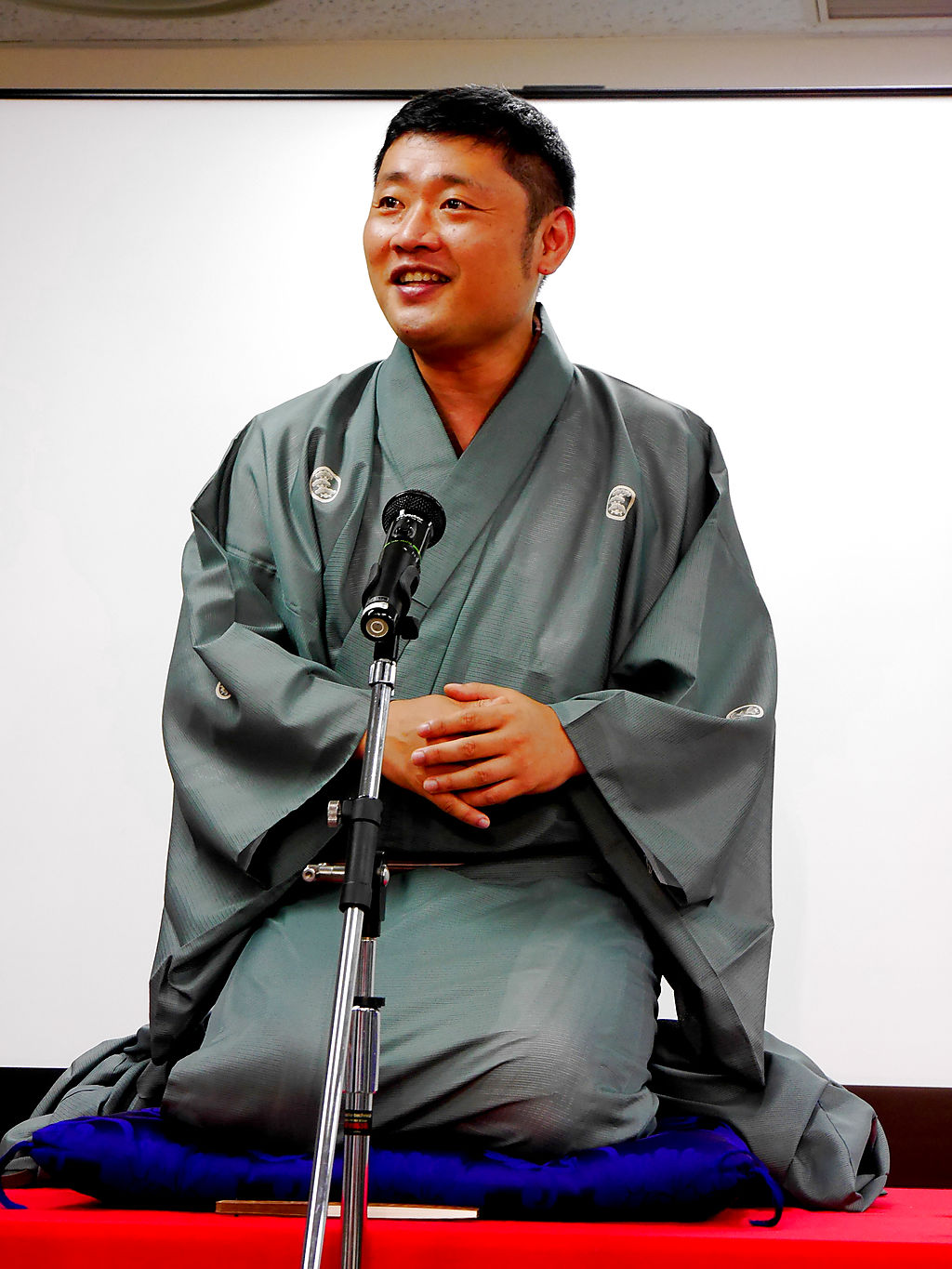
Tatekawa’s desire to learn more about Japan influenced him to return to his home country after graduating from Yale University
Rakugo is a traditional comical style of story-telling that originated approximately 300 years ago in Edo-period Japan. Rakugo performers sit down on a zabuton, or cushion in kimono and use two tools: a sensu, or folding fan, and a hand-towel. Rakugo is unique in that performers tell a story while acting out all the characters that appear in the story. Performers accomplish this by changing the direction of their face as they switch between characters. “It’s very difficult to explain what rakugo is to my foreign friends because there is no word such as ‘rakugo’ in English. I tell them rakugo is Japanese traditional stand-up comedy, but sitting down.” said Tatekawa.
Tatekawa began his performance with several kobanashi, or little stories. One was about a family, a car accident, and a driving monkey, and another about an old woman who mistakes her face in the mirror for a Picasso painting. Audience members burst into laughter as Tatekawa unraveled the stories through hilarious dialogues. “The idea of Rakugo is that I am not the only one doing the job. I am acting out a story, but it’s all up to your imagination to imagine what the story is like. It is a collaborative effort between the performer and the audience. When we have a good collaboration, it becomes a good rakugo show.”
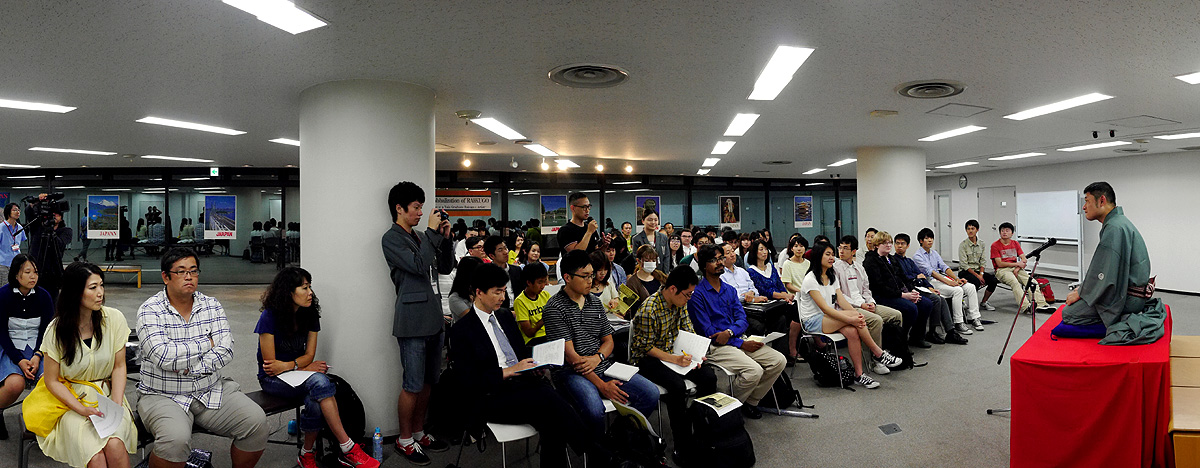
Students and guests filled all seats at the Okuma Garden House
Tatekawa grew interested in rakugo after graduating from Yale University and returning to Japan to work for a Japanese trading company. Tatekawa had been working for two years when he first came across rakugo. He was walking through the town of Sugamo when he came across a sign advertising his future master, Shinosuke Tatekawa’s rakugo show. Not knowing anything about rakugo, Tatekawa decided to purchase a ticket and see the show. “The feeling I got when I first saw rakugo was that I would see Shinosuke in the beginning but when the story began he seemed to disappear from my sight and the characters started moving in front of me, and the story started moving…I had never had that kind of experience.” It was because of this experience that Tatekawa decided to leave his company and become a disciple of Shinosuke Tatekawa.
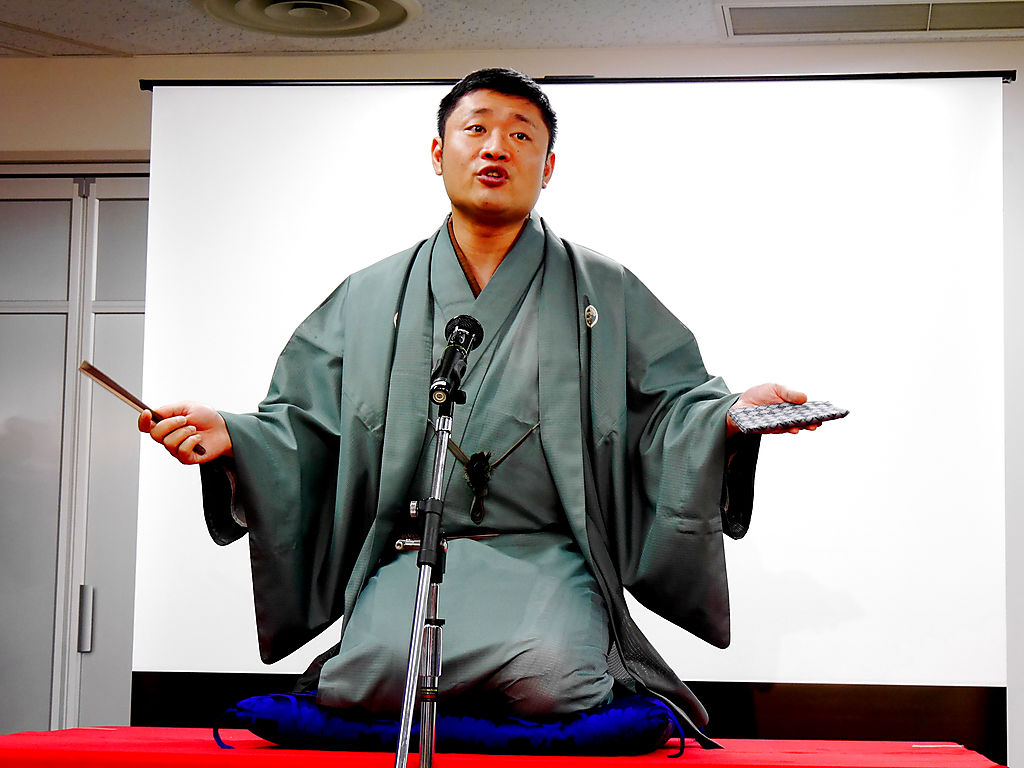
Tatekawa recalls his time as a pupil of Shinosuke Tatekawa where he spent most of his days doing house chores
The overarching theme of Tatekawa’s performances was about “people who pretend to know things that they don’t.” The main performance of the night was of the story Tenshiki, which tells the story of a monk, his disciple, and a doctor. During a visit from the doctor, the monk is asked if he has tenshiki. Not knowing what tenshiki is and in an attempt to avoid embarrassment, the monk tells the doctor he does not have tenshiki. What follows is a hilarious series of exchanges between the three characters in an attempt to discover the meaning of tenshiki without revealing their own ignorance.
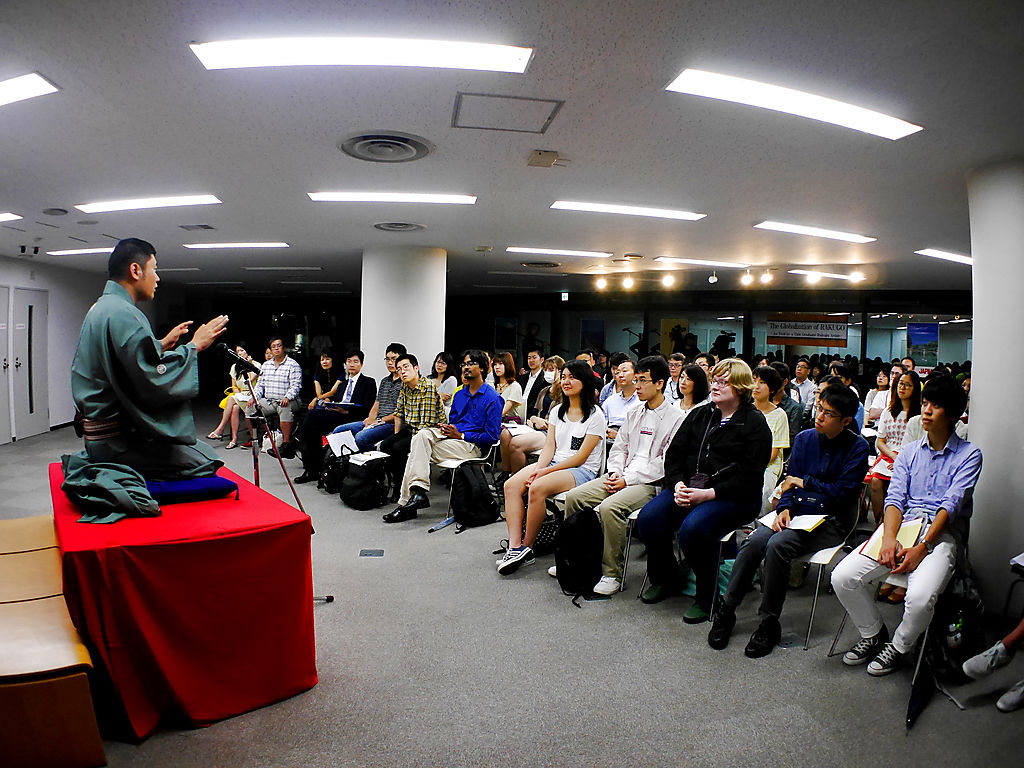
Tatekawa’s final story of the night was about a vendor’s attempts to sneak alcohol into a samurai castle
At the end of the event, Tatekawa answered questions from students. One student asked Tatekawa if he would be interested in teaching his apprentices how to perform English rakugo. “I have never thought about that. If someone comes from abroad and they like this style and say that they would like to learn there would be no reason for me to refuse. I am not sure if I would take the apprentice style because it is a very traditional Japanese style. Maybe I would use another style because I think it would be better if someone from another country can tell their own story using this technique. That would be better than them telling a Japanese story because if they can create their own style using rakugo it would make for good cultural exchange. I hope that someday there will be a chance like that.”
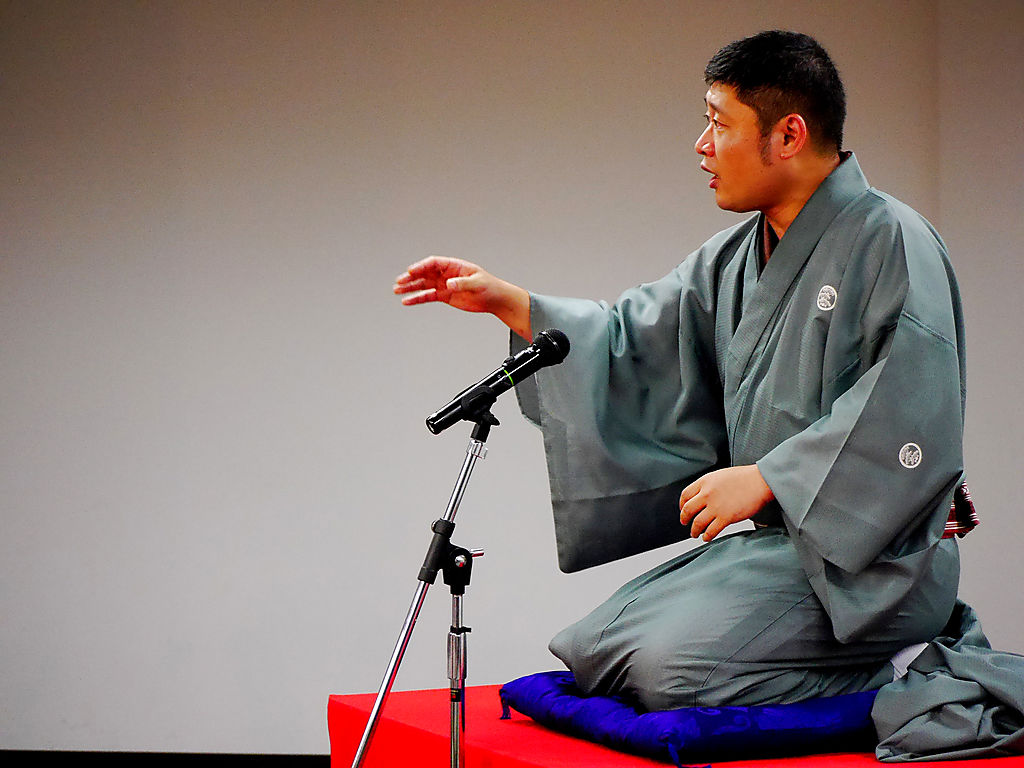
Tatekawa hopes to perform English rakugo in Hong Kong in the near future
Shinoharu Tatekawa
After graduating from Yale University, Shinoharu Tatekawa returned to Japan to work for the Japanese trading company MITSUI & Co., Ltd. In 2002, he left the company and became a disciple of the famous rakugo storyteller Shinosuke Tatekawa. Shinoharu Tatekawa performed at the 2012 International Storytelling Festival in Singapore and since 2013, he has performed in Singapore twice a year. He performs classical rakugo, modern rakugo, and English rakugo.













